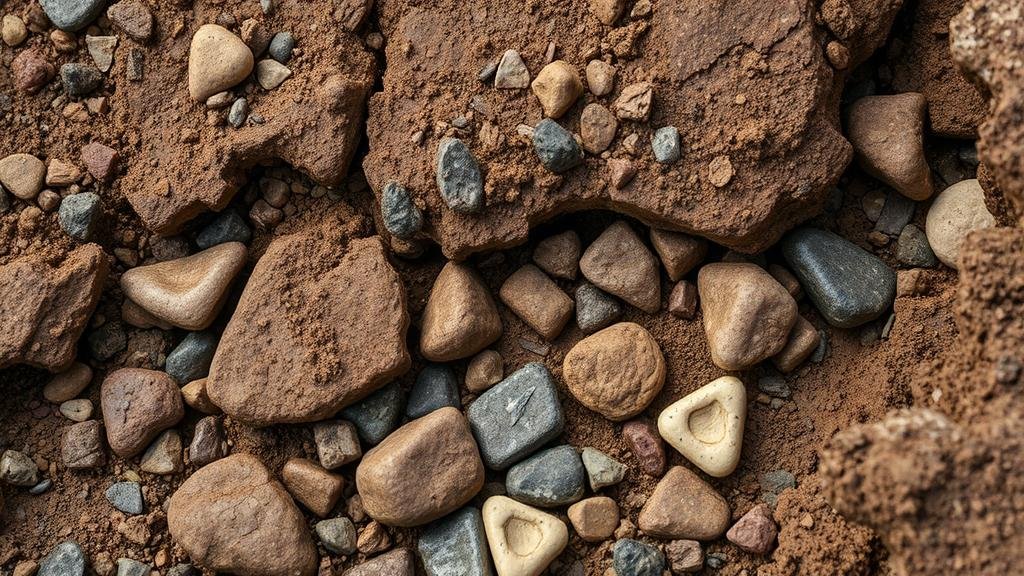Unearthing Stone Tools in Floodplain Sediments After Heavy Rains
Unearthing Stone Tools in Floodplain Sediments After Heavy Rains
The discovery of ancient stone tools often provides invaluable insights into human prehistory, cultural development, and technological advancement. This article explores the intricate relationship between natural flooding events and archaeological findings, specifically focusing on how heavy rains can lead to the unearthing of stone tools embedded within floodplain sediments. The sedimentary processes, the significance of these tools, and the impact of climate change on archaeological practices will be detailed in the following sections.
The Geological Context of Floodplains
Floodplains are flat areas adjacent to rivers that experience periodic flooding, fostering a unique environment for sediment deposition. During heavy rains, rivers can overflow their banks, transporting a mixture of organic and inorganic materials. These sediments can encapsulate artifacts, including stone tools, offering a snapshot of past human activities.
Typically, floodplain sediments can exhibit distinct stratification, which is crucial for archaeologists. A stratified deposit can reveal a chronological sequence of human occupation. For example, radiocarbon dating has shown that certain layers of sediment correspond to specific prehistoric periods, permitting researchers to trace the evolution of tool-making techniques through time.
How Heavy Rains Help Archaeological Discoveries
Heavy rainfall events can dramatically alter the landscape, leading to the erosion of surface materials and revealing previously buried artifacts. The processes involved are multi-faceted:
- Erosion: When intense rain causes riverbanks to erode, it can expose stone tools that were locked away in sediments for centuries or even millennia.
- Transportation: Floodwaters can transport artifacts over considerable distances, depositing them in new contexts where they can be studied further.
- Concentration: As water recedes, tools may settle in less disturbed areas, allowing archaeologists to find clusters of artifacts in specific locations.
For example, in 2010, floods in the English countryside exposed numerous flint tools from the Paleolithic era along the Thames River, prompting further investigations that revealed much about early human inhabitants of the region.
Case Study: The Sumerian Floodplain Discoveries
Another illustrative example comes from the ancient Sumerian floodplains in modern-day Iraq. Recent archaeological surveys after significant rainfall unearthed a variety of stone tools that showcased the adeptness of the Sumerians in crafting implements from local materials. LiDAR technology combined with conventional excavation has allowed researchers to map the sediment layers effectively, revealing a wealth of information about the societys technological advancements.
In various regions of southern Mesopotamia, these findings have been linked to significant sociopolitical changes, such as the rise of urbanized centers. The stratified contexts where stone tools were found helped establish timelines for settlement patterns, trade routes, and cultural exchanges.
Challenges and Considerations in Fieldwork
While heavy rains can yield exciting discoveries, they also pose challenges for archaeologists, including:
- Site Preservation: Quick onset of flooding can damage archaeological sites before they can be adequately documented and excavated.
- Accessibility: Floodwaters can render sites inaccessible, delaying crucial fieldwork.
- Interpretation Risks: Artifacts may arrive out of context, making it difficult to ascertain their original use or cultural significance.
To combat these issues, archaeologists are increasingly utilizing remote sensing technologies and predictive modeling to identify potential “hotspots†for future excavations following heavy rainfall.
Implications of Climate Change
As climate change leads to more unpredictable weather patterns, the frequency and intensity of heavy rains are likely to increase. This has several implications for archaeology:
- Site Vulnerability: More extreme weather could exacerbate erosion and damage archaeological sites.
- Opportunities for New Discoveries: It may lead to the discovery of previously unexamined artifacts due to continual sediment movement.
- Community Engagement: Increased public interest can inspire community-led archaeology initiatives, as local populations often witness these environmental changes firsthand.
For example, as urban areas expand into ancient floodplain zones, local residents may find artifacts during construction projects, leading to grassroots archaeological efforts aimed at preserving cultural heritage.
Conclusion and Actionable Takeaways
Unearthing stone tools in floodplain sediments post-heavy rainfall sheds light on our understanding of prehistoric human activities. By studying these tools and their contexts, archaeologists can reconstruct cultural narratives while facing the dual challenge of adaptation in fieldwork methodologies against a backdrop of climate change.
For aspiring archaeologists and enthusiasts alike, these takeaways can enhance their approaches:
- Stay informed about local geological features and flooding patterns for potential archaeological opportunities.
- Engage with community groups and local governments to advocate for the preservation of vulnerable sites.
- Consider utilizing technology, such as GIS and remote sensing, in both personal and professional archaeological endeavors.
To wrap up, understanding how nature interacts with archaeology not only enhances our knowledge of the past but also guides us toward better preservation efforts for the future.



